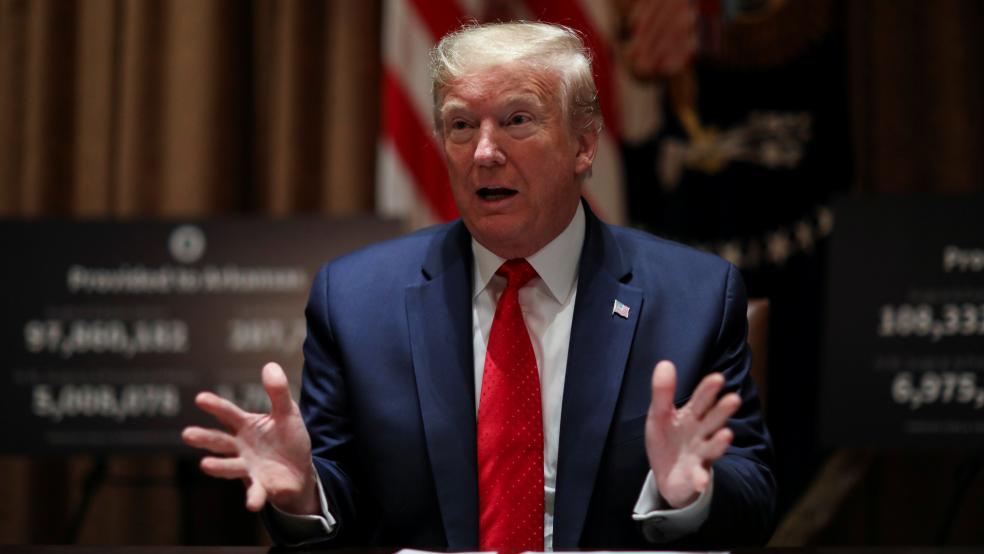The enhanced unemployment benefits provided by Congress for laid-off workers as part of the $2.2 trillion CARES Act are shaping up to be a major point of contention as lawmakers engage in an increasingly partisan debate over a next round of coronavirus aid.
President Trump reportedly expressed opposition to extending the $600-a-week increase in unemployment benefits, which comes on top of benefits already provided by states, during a closed-door lunch with Senate Republicans on Tuesday, The Washington Post’s Seung Min Kim reports.
Democrats have proposed extending the aid, which is set to expire at the end of July, through January 2021, but Republicans — some of whom balked at the initial boost — have said they worry that some workers are making more in unemployment than they would at their jobs, giving them little incentive to return to work. A paper from University of Chicago researchers found that 68% of jobless workers eligible for unemployment insurance will get benefits greater than their lost earnings, according to The Hill.
Trump reportedly also did not say that he would reject a coronavirus bill that extends the jobless benefit, but Sen. Lindsey Graham told the Post that the president agrees that that is hurting the recovery.
It’s not clear whether Trump would want to eliminate the enhanced payments or possibly lower or cap them. Some Republicans have floated the idea of allowing people to continue getting some level of benefits for a set period of time when they return to work.
That’s a significant concern for the Trump administration as it pins it hopes for a swift economic rebound — and the president’s reelection prospects — on the reopening of states rather than additional federal stimulus. “It’s a transition to greatness,” Trump told reporters after his Senate lunch Tuesday. “It’s the third quarter, and then it’s going into the fourth quarter. I think the fourth quarter is going to be really good. But I think that, above all, next year you’re going to have a tremendous year.”
By contrast, Federal Reserve Chairman Jerome Powell reiterated this week that a full recovery might take until the end of 2021 and the Congressional Budget Office projects that unemployment will average 9.3% next year, similar to the elevated levels seen during the 2007-2009 recession.
A steep cut for jobless workers: More than 36 million people have filed for first-time unemployment benefits over the past two months. The Treasury Department reported that spending on unemployment benefits rose to $48.4 billion in April, up $45 billion from February. A recent report from the Brookings Institution found that those payouts offset just over half of the estimated $80 billion in private wages and salaries lost last month. And many economists worry that allowing the enhanced benefit to expire could undercut any recovery by leaving consumers facing a dire cash crunch. Ending the benefit boost would reportedly reduce the incomes of about 25 million Americans by half.
The bottom line: “Trump’s own motives on this issue might be colored even more by his desire to declare the coronavirus pandemic over, and the economy in full recovery,” Ed Kilgore writes at New York Magazine’s Intelligencer. “You don’t need enhanced UI benefits if the economy is racing back towards full employment and will soon once again be the greatest economy in the history of the human race, at least in Trump’s mind.”
But Trump may be undercutting the chances of the strong rebound he wants and likely needs to help his chances of winning another term in November. In any case, with the Senate leaving later this week for its Memorial Day recess and Republicans still urging a “pause” before any additional legislation, talks on a new package aren’t likely to go anywhere for a couple of weeks — and there are still plenty of other issues to be hashed out as well, from aid to state and local governments to stimulus payments to households.





